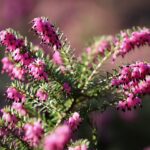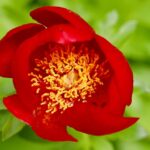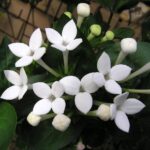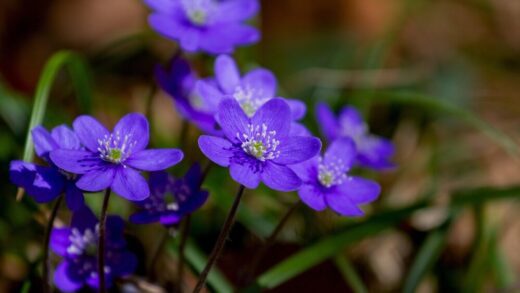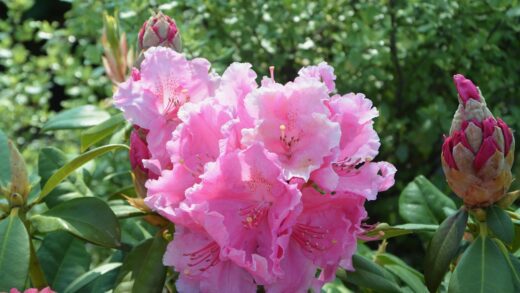The light requirements of the everlasting pea are a cornerstone of its successful cultivation, directly influencing its vigor, growth habit, and, most critically, its ability to produce a spectacular floral display. This perennial vine is a quintessential sun-loving plant, and providing it with the appropriate amount of direct sunlight is the single most important factor in achieving the profusion of blooms for which it is known. Understanding the nuances of its relationship with the sun, from the ideal duration of exposure to the consequences of insufficient light, allows a gardener to select the perfect site and manage the plant for optimal performance and health.
The everlasting pea thrives and flowers most prolifically when it is situated in a location that receives full sun. In horticultural terms, “full sun” is defined as a minimum of six to eight hours of direct, unfiltered sunlight per day during the growing season. This significant amount of light energy is essential for the plant to conduct photosynthesis efficiently. Photosynthesis is the process by which the plant converts light energy into chemical energy, creating the sugars that fuel all of its growth, from its climbing vines and lush foliage to its abundant flowers.
A location on a south-facing or west-facing wall, fence, or trellis is often ideal, as these exposures typically receive the most intense and prolonged sunlight throughout the day. When the plant’s light requirements are fully met, it responds with robust and vigorous growth, strong stems, and dense foliage. Most importantly, ample sunlight is the primary trigger for the initiation of flower buds, leading to a long and continuous blooming period that can last from early summer until the first frosts of autumn.
While the plant’s demand for sun is high, in extremely hot climates, some protection from the most intense afternoon sun can be beneficial. In regions with scorching summer heat, the relentless afternoon sun can sometimes stress the plant, leading to scorched leaves or wilting. In these specific conditions, a location that provides direct morning sun for at least six hours, followed by light or dappled shade during the hottest part of the afternoon, can be a suitable compromise that still allows for excellent flower production while reducing heat stress.
It is also important to consider how the light conditions in a garden can change throughout the seasons. A spot that is sunny in the spring might become shadier as deciduous trees leaf out. When selecting a permanent home for this perennial, observe the chosen location at different times of the day and year to ensure it will consistently provide the necessary amount of direct sunlight to meet the plant’s needs for vigorous growth and prolific blooming.
The effects of insufficient light
Placing the everlasting pea in a location with insufficient light is the most common reason for disappointing performance, particularly a lack of flowers. If the plant receives less than six hours of direct sunlight per day, it will struggle to generate enough energy to support a robust bloom cycle. While the plant may still grow in partial shade, its appearance will be markedly different from a specimen grown in full sun. The primary and most noticeable consequence will be a significant reduction in the number of flowers produced, and in very shady conditions, the plant may not bloom at all.
In addition to poor flowering, a lack of adequate sunlight will affect the plant’s overall growth habit. It will often become “leggy,” a term used to describe a plant with elongated, weak stems and sparse foliage. This occurs as the plant stretches and strains to reach for a light source. The internodes, which are the spaces on the stem between the leaves, become longer than usual, giving the plant a thin, etiolated, and less attractive appearance compared to the dense, bushy growth seen in sunny conditions.
Plants grown in too much shade are also more susceptible to certain diseases, most notably powdery mildew. Shady conditions often correspond with reduced air circulation and higher humidity, creating the perfect microclimate for this fungal disease to take hold. The leaves in a shady spot also stay wet for longer after rain or morning dew, further encouraging fungal spore germination. A sun-drenched location not only inhibits the fungus but also promotes stronger, more resilient growth that is better able to withstand disease pressures.
The color of both the foliage and the flowers can also be affected by a lack of light. The leaves may appear a paler green than is typical, and the flowers that do form may be smaller and less vibrant in their coloration. If you have an established everlasting pea that is exhibiting these symptoms—leggy growth, sparse foliage, and few or no flowers—the first factor to assess is its light exposure. If it is in a shady spot, transplanting it to a sunnier location in the spring or autumn is the most effective solution to rejuvenate the plant.
Light and plant establishment
For newly planted everlasting peas, whether grown from seed or transplanted from a pot, adequate sunlight is crucial for successful establishment. During its first growing season, the young plant is focused on developing a strong and extensive root system, which will anchor it and provide water and nutrients for years to come. The energy required to build this root infrastructure is generated through photosynthesis in the leaves, making full sun exposure a critical component of this establishment phase.
When sowing seeds directly in the garden, a sunny location ensures that the soil warms up quickly in the spring, which promotes faster and more uniform germination. Once the seedlings emerge, the strong sunlight encourages them to develop into sturdy, compact plants rather than weak, leggy ones. This strong start helps the young plants to be more resilient against pests and diseases and better equipped to compete with any surrounding weeds.
When transplanting a nursery-grown plant, moving it into a location with the same or greater light intensity than it was accustomed to will help minimize transplant shock. A plant grown in bright greenhouse conditions that is suddenly moved to a shady garden spot will struggle to adapt. Ensuring the new home provides the full sun it needs from day one will allow it to quickly acclimate and begin putting down new roots into the surrounding soil.
Throughout its first year, the combination of full sun and consistent moisture will enable the young everlasting pea to build the resources necessary to survive its first winter and emerge as a strong, vigorous plant the following spring. While it may not flower extensively in its first season as it prioritizes root and vegetative growth, providing it with optimal light conditions from the very beginning sets the stage for a spectacular floral display in all subsequent years.
Adapting to light conditions
While full sun is the undisputed ideal, the everlasting pea does exhibit a degree of adaptability. It can tolerate conditions of partial shade, particularly in the afternoon, as long as it receives a solid period of direct morning sunlight. In these less-than-ideal conditions, gardeners must be prepared to accept a trade-off: the plant will likely be taller and more open in its habit, with a noticeable reduction in the density of its blooms compared to a plant in a full-sun location.
If your garden does not offer a location with the ideal six to eight hours of sun, you can still attempt to grow the everlasting pea, but site selection becomes even more critical. Choose the sunniest possible spot you have available. You can also increase the amount of light a plant receives through reflective surfaces. Planting against a light-colored wall or fence can reflect heat and light back onto the plant, slightly increasing the light intensity it experiences and potentially improving its flowering performance.
It is also important to manage surrounding vegetation to ensure the everlasting pea continues to receive enough light. As nearby shrubs and trees grow over the years, they can begin to cast more shade on a previously sunny spot. Regular pruning of these neighboring plants may be necessary to maintain adequate light levels for the sun-loving vine. This is a common issue in maturing gardens that can lead to a gradual decline in the performance of sun-loving perennials if not addressed.
Ultimately, while some adaptation is possible, there is no substitute for adequate sunlight if the goal is a profusion of flowers. If your plant is consistently failing to perform and you have ruled out other issues like over-fertilization, the most likely culprit is insufficient light. In such cases, the best and often only course of action is to move the plant to a sunnier part of the garden where it can finally receive the energy it needs to live up to its full flowering potential.

